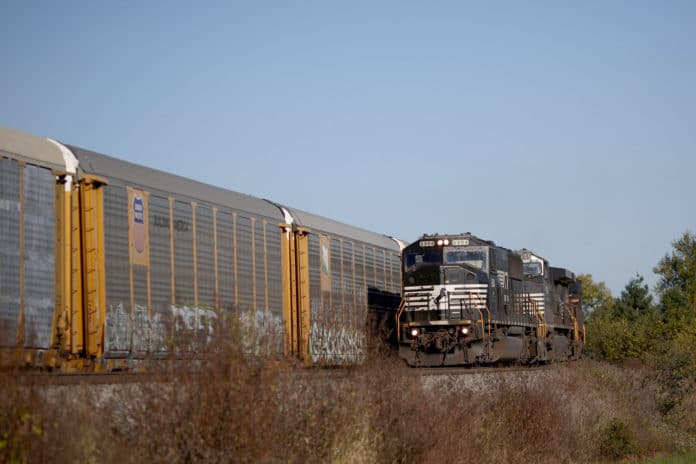Railroad shipments are falling at the fastest pace since 2009, employees are getting furloughed and profits probably fell for the fifth straight quarter. Yet for investors the worst may already be over.
CSX Corp., the first of the major railroads to report second-quarter results, is expected to post a 24 percent plunge in adjusted profit on Wednesday after markets close, based on analysts’ estimates compiled by Bloomberg. Profit at Union Pacific Corp. is projected to slump 14 percent and at Norfolk Southern Corp. profit is forecast to tumble 6.4 percent. Canada’s two rail lines also will report lower earnings.
Investors are looking past those worrisome results and seeing signs of improvement for the second half. While shipments slumped 8.2 percent during the quarter, the most in seven years, the rate of decline eased by about half in the last four weeks, according to data from the Association of American Railroads compiled by Bloomberg. Analysts are forecasting a return to profit growth by the final months of the year for the three big carriers.
“People are willing to assume that this is the trough,” said Mark Levin, an analyst with BB&T Capital Markets in Richmond, Virginia. “As long as it’s not getting worse they’re not as concerned. They just want to see it get better.”
Since rail stocks bottomed in January, Omaha, Nebraska-based Union Pacific has recovered more than 30 percent. Norfolk Southern, based in Norfolk, Virginia, has gained almost as much and Jacksonville, Florida-based CSX is ahead more than 20 percent. They’re all still 25 percent or more below their highs set in late 2014 or early last year.
The weakness in the second quarter, led by lower volume of coal, metals and merchandise, was exacerbated by a decline in intermodal shipments — consumer goods packed in containers that can be carried by ships, railroads and trucks. For years, railroads have wrestled market share from trucks by offering less-expensive and more fuel-efficient service, although slower.
Intermodal shipments declined 5.5 percent in the second quarter after an 1.8 percent gain in the prior three months. Retail inventories piled up because of slack consumer demand, and trucking rates sank because of too many big-rigs chasing fewer loads, according to Lee Klaskow, an analyst with Bloomberg Intelligence.
Over the long term, declining coal use has weighed most on the railroads. The fuel accounted for more than 30 percent of CSX’s revenue prior to 2012. Shipments dwindled to less than 20 percent in 2015 and shrank to 15 percent in the first quarter as power plants converted to cheaper, cleaner-burning natural gas. A hot summer and cold winter could whittle down coal stockpiles and help stabilize demand, Levin said.
The good news for carriers is that the decline in volume should continue to ease as some categories resumes growth, such as grain, and as the industry laps the declines that accelerated in the fourth quarter of 2015, Klaskow said.
In addition to cutting payrolls, the carriers are also expected to report price increases for the second quarter. Lower costs and higher prices suggest earnings could pop when shipments recover.
“Railroads continue to be poised to deliver significant operating leverage on any uptick in demand,” said Bascome Majors, an analyst with Susquehanna International Group, in a July 6 note.






